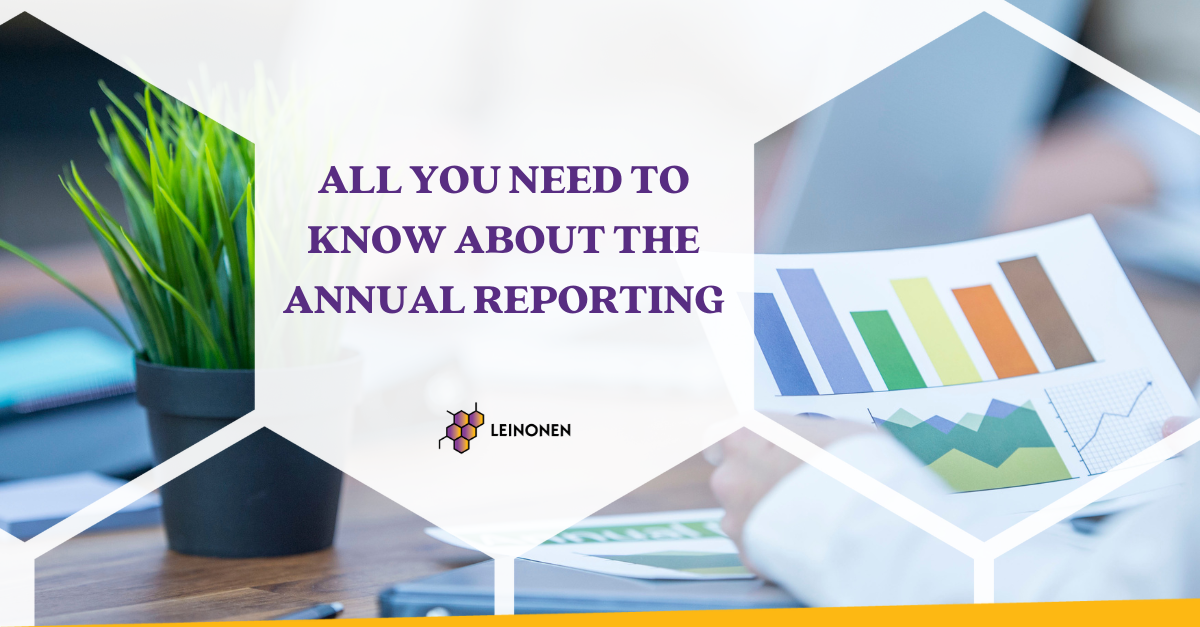As the deadline for annual reports in Estonia is June 30th, we would like to remind of key aspects related to the preparation and submission of annual financial reports.
Timely submission of annual reports is not only a legal obligation, but it also ensures transparency and helps maintain the trust of stakeholders, investors, and regulatory authorities. Failing to comply can result in significant penalties, fines, and potential damage to your company’s reputation. We encourage businesses to prioritize this responsibility and avoid unnecessary complications by submitting reports timely and duly. Key points to remember:
- Board members are responsible for ensuring report accuracy.
- Failure to submit reports may result in removal from the register or fines.
- The Centre of Registers and Information Systems issues a warning before exclusion, allowing a grace period for compliance.
Timely submission avoids severe consequences and preserves business opportunities.
Useful information for preparing the annual reports
According to the Accounting Act, companies are categorized based on their balance sheet figures as of the reporting date and their level of public interest. Different requirements for annual reports are established based on the Estonian financial reporting standards.
If a company fails to meet the criteria for its category for two consecutive financial years, the provisions of the category it now belongs to will apply starting from the third year (the year following the two consecutive financial years).
Annual accounts must provide a true and fair view of the accounting entity’s financial position, operational results, and cash flows, enabling users to make informed business decisions. Annual accounts consist of basic reports (balance sheet, income statement, cash flow statement, and statement of changes in equity) and notes
Under the Accounting Act, micro-enterprises and small-scale enterprises may prepare abridged annual accounts instead of full annual accounts based on the Estonian financial reporting standards. These abridged accounts must include at least two basic reports (balance sheet and income statement) and annexes. A micro-enterprise may also choose to prepare an abridged or full annual report of a small-scale enterprise.
Financial statements must present a true and fair view of the company’s financial position, operational results, and cash flows. The annual report consists of basic reports (balance sheet, income statement, cash flow statement, and statement of changes in equity) and notes.
Medium-sized and large undertakings must prepare a full annual report, which includes a management report, four main statements (balance sheet, income statement, cash flow statement, and statement of changes in owners’ equity), and notes. A full annual report is also mandatory for non-profit associations and foundations.
A micro-enterprise may, if it chooses, prepare an abridged annual account of a small undertaking, and both micro and small enterprises may, if necessary, prepare a full annual report.
Annual accounts must be prepared in Estonian and in the officially applicable currency of Estonia, with the degree of precision for figures clearly indicated (e.g., in euros or thousands of euros).
Balance sheet and income statement
The balance sheet is a view of the company’s financial situation (assets, liabilities and equity as of the end of the financial year). The income statement lists the income and expenses and is a view of the company’s operating results during the reporting period (income, expenses and profit or loss).
Cash flow statement
The cash flow statement is a view of the company’s cash flows during the reporting period (receipts of cash and cash equivalents and disbursements). In this statement, you indicate the receipts and expenditures during the reporting period, grouped according to their purpose as cash flow from operating activities, investing activities and financing activities.
Statement of changes in equity
The Statement of changes in equity is used to recognize changes in the company’s equity during the reporting period. You are required to record separately any contributions of capital made by the owners and disbursements made to owners, profit or loss for the reporting period, impact of changes in accounting policies, increase and decrease of reserves and other economic transactions that impacted equity entries.
Notes to the annual accounts
The number of notes in the annual report varies depending on the company. However, the following must be included:
- An explanation of the financial reporting standard used to prepare the annual report.
- The accounting policies applied in preparing the annual report.
- Explanations of key entries and any changes in them during the reporting period.
Management report
Management reports provide an overview of a company’s activity and circumstances that are of material importance to evaluating the company’s financial condition and economic activity, key events in the financial year, and forecast development trends in the next financial year. One should certainly not forget to put down the main activity and ancillary activities of the accounting entity.
In the case that the owners’ equity is not in accordance with the requirements of the Commercial Code (meaning that it is negative) as at the end of a financial year, the management report must include a description of activities that have been performed or will be performed to be sustainable in the future or state if a different decision has been adopted.
Accounting entities that are subject to an audit obligation must include the main financial ratios concerning the financial year and the preceding financial year, and the methods for calculating the ratios (equations) in their management report.
Basic principles of preparing the annual report
- The company maintains separate accounts for its assets, liabilities, and business transactions, as well as those of its owners, creditors, employees, and customers.
- In preparing the report, it is assumed that the company will continue its activities as a going concern and does not intend to terminate its operations.
- The information disclosed in the report must be concise and unambiguous.
- The report includes all significant information affecting the financial situation, financial performance, and cash flows. Important information is considered to be any information whose non-disclosure may affect the economic decisions made by the reader of the report.
- The same accounting policies and presentation formats are used on an ongoing basis in the preparation of the report.
- Expenses related to the revenue earned during a given accounting period are deducted from such revenue.
- The information provided in the report must be objective and reliable.
- The report must be prepared prudently to avoid overestimating assets or revenue or underestimating liabilities or expenses.
- The report provides all information that enables the reader to obtain relevant and truthful insights about the company.
- Business transactions are recorded based on their substance, even if this does not correspond to their legal form.
The content of the annual report depends on the type of a company.
Reporting in English
If the company wants to prepare an informative report in English, the corresponding option should be selected in the general information of the report. Then, it is possible to fill in both Estonian and English forms in parallel and generate an informative English report. Only the Estonian version of the report is signed in the system and submitted to the register (e-Business Register).
Changing main and contact information
When compiling the report, it can be indicated whether the report is submitted with the aim of updating the data of the legal entity’s current means of communication in the Commercial Register or not. The email address submitted to the commercial register must be confirmed in advance (a corresponding letter will be sent to the email address, where the correctness of the email must be confirmed).
Deadlines for the submission of the Financial Statements
The annual report and the documents and data submitted with it must be submitted to the registration department of the county court within six (6) months of the end of the financial year.
A branch of a foreign company shall submit the annual report of a foreign company to the registration department of the county court within one (1) month of the approval of the company’s annual report or within seven (7) months of the end of the financial year.
The annual report must be submitted even if there was no economic activity during the reporting period.
Inspection and audit
The limits have been increased by 25% compared to the previously valid rates, and the new limits will apply to the annual report prepared for 2024. Companies that meet the criteria for mandatory review or audit should start selecting an auditor today, because currently the supply of auditors in Estonia is lower than the demand.
Inspection obligation
The inspection is mandatory for a company whose annual financial statements contain at least two of the indicators for the reporting year that exceed the following conditions:
- Sales revenue or income – 2,000,000 euros.
- Amount of assets as of the balance sheet date – 1,000,000 euros.
- Average number of employees in the reporting year – 24 people.
In addition, an inspection is mandatory if one of the indicators exceeds the following limits:
- Sales revenue or income – 6,000,000 euros.
- Amount of assets as of the balance sheet date – 3,000,000 euros.
- Average number of employees in the reporting year – 72 people.
Audit engagement
The audit obligation applies to a company whose at least two of its reporting year indicators exceed the following thresholds:
- Sales revenue or income – 5,000,000 euros.
- Amount of assets as of the balance sheet date – 2,500,000 euros.
- Average number of employees in the reporting year – 50 people.
If at least one of the indicators for the reporting year exceeds the following thresholds, an audit is also required:
- Sales revenue or income – 15,000,000 euros.
- Amount of assets as of the balance sheet date – 7,500,000 euros.
- Average number of employees in the reporting year – 180 people.





